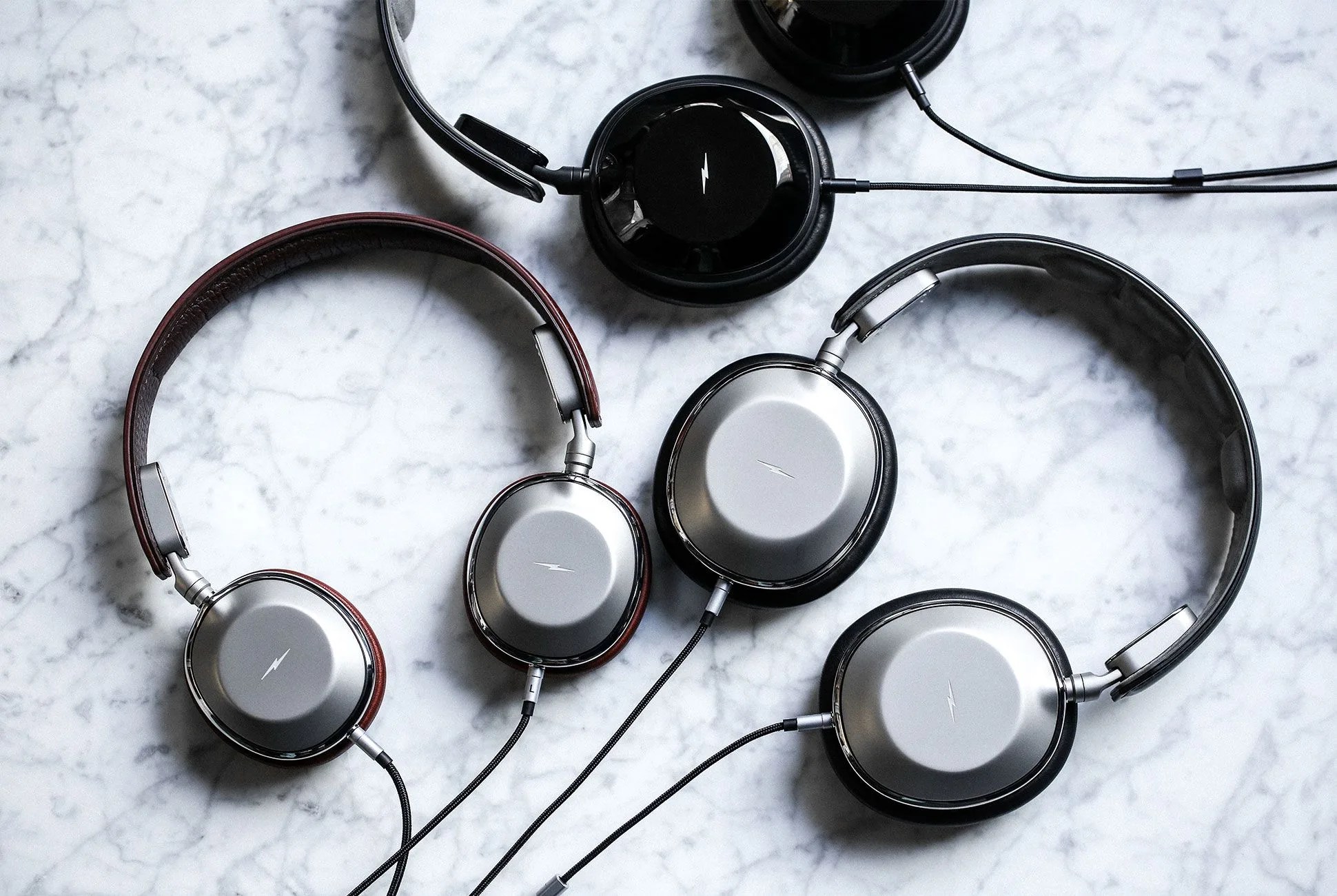Shinola is best known for its premium leather goods (bags, wallets, belts) and high-end watches. And while that’s still true, the Detroit-based manufacturer has been in the high-end audio game for the past few years as well. Its audio division — which goes by Shinola Audio — announced the Runwell turntable ($2,500) back in October 2016, and then a pair of bookshelf speakers ($1,500) earlier this year. And today, it announced its first four pairs of headphones: the Canfield Headphone Collection.
The new collection consists of over-ear and on-ear headphones, named the Canfield Over-Ear ($595+) and Canfield On-Ear ($495+), respectively; and two in-ear headphones, the Canfield In-Ear Monitors ($195) and the audiophile-grade Canfield Pro In-Ear Monitors ($495), the latter of which has superior drivers and removable cables. Alex Drinker, Shinola’s Director of Operations, stopped by our New York offices to show us the over-ear and on-ear headphones. The two in-ear models are “about three weeks behind,” according to Drinker, so I wasn’t able to get any hands-on time with them.
The over-ear and on-ear headphones come in two colors, black and cognac, with black models being slightly more expensive (an extra $55) because of the glossing process, Drinker said. The two models differ — albeit slightly — in their drivers, fit and sound. According to Drinker, the on-ear headphones produce slightly higher highs with clearer treble, while the over-ear headphones have a little more well-rounded sound. The two headphones do share a lot of the same all-natural components: stainless steel and leather, with lambskin ear pads that magnetically snap on and off. Both of these first-gen headphones are wired. No ANC. No Bluetooth.
In our short meeting, I tried both on-ear and over-ear headphones and was struck by the weight and natural noise isolation of each. They felt substantial, in a good way, with naturally heavy ear cups that created a surprisingly strong seal on my ears. Even on the on-ear headphones, the noise isolation was pretty phenomenal — I couldn’t hear my colleagues talking across the table. They were comfortable, too. I listened to a few curated rock playlists on Tidal and thought they sounded great, but I’m no audiophile. I asked Drinker about the type of sound they were going for: “The Shinola sound signature is the warm mid-tones, natural bass and crisp clear highs. We’ve got a well-rounded sound. It’s a very open, full-bodied sound and once you hear it, the soundstage is pretty big on them.”
Shinola’s first over-ear and on-ear headphones are really about high quality and simple design. Both are bespoke and made with materials that will last decades. The leather will patina over time. And the two components that will eventually deteriorate, the cables and the ear pads — you can order replacement parts of each through Shinola. Each of these headphones, with the exception of maybe the Canfield Pro In-Ear Monitors, are designed for anybody listening to music on their smartphone or laptop.
The Canfield Over-Ear ($595+) and Canfield On-Ear ($495+) headphones are available today. Both in-ear monitors are available for pre-order and are expected to ship in the coming weeks. All models are assembled in Detroit.
Key Specs:

